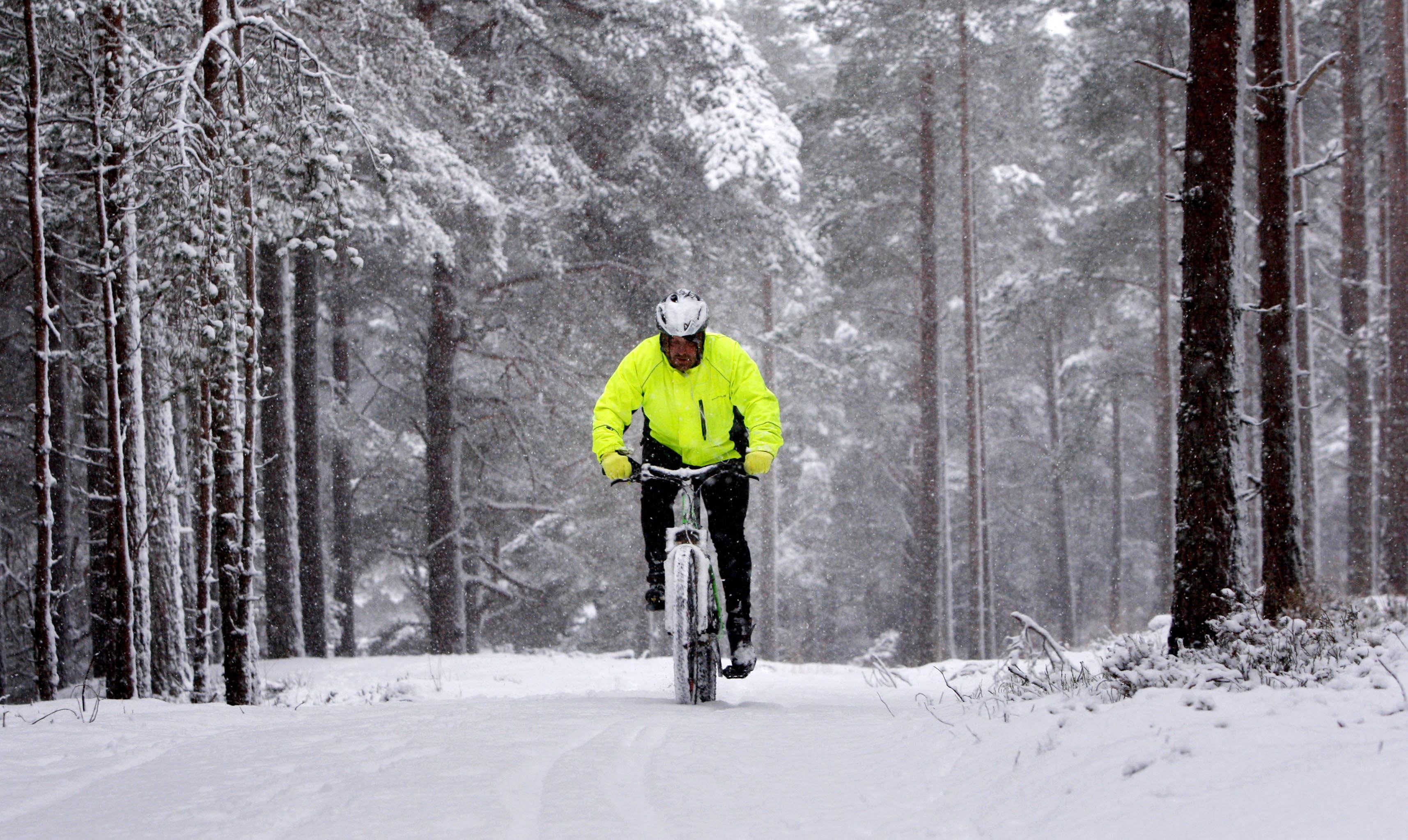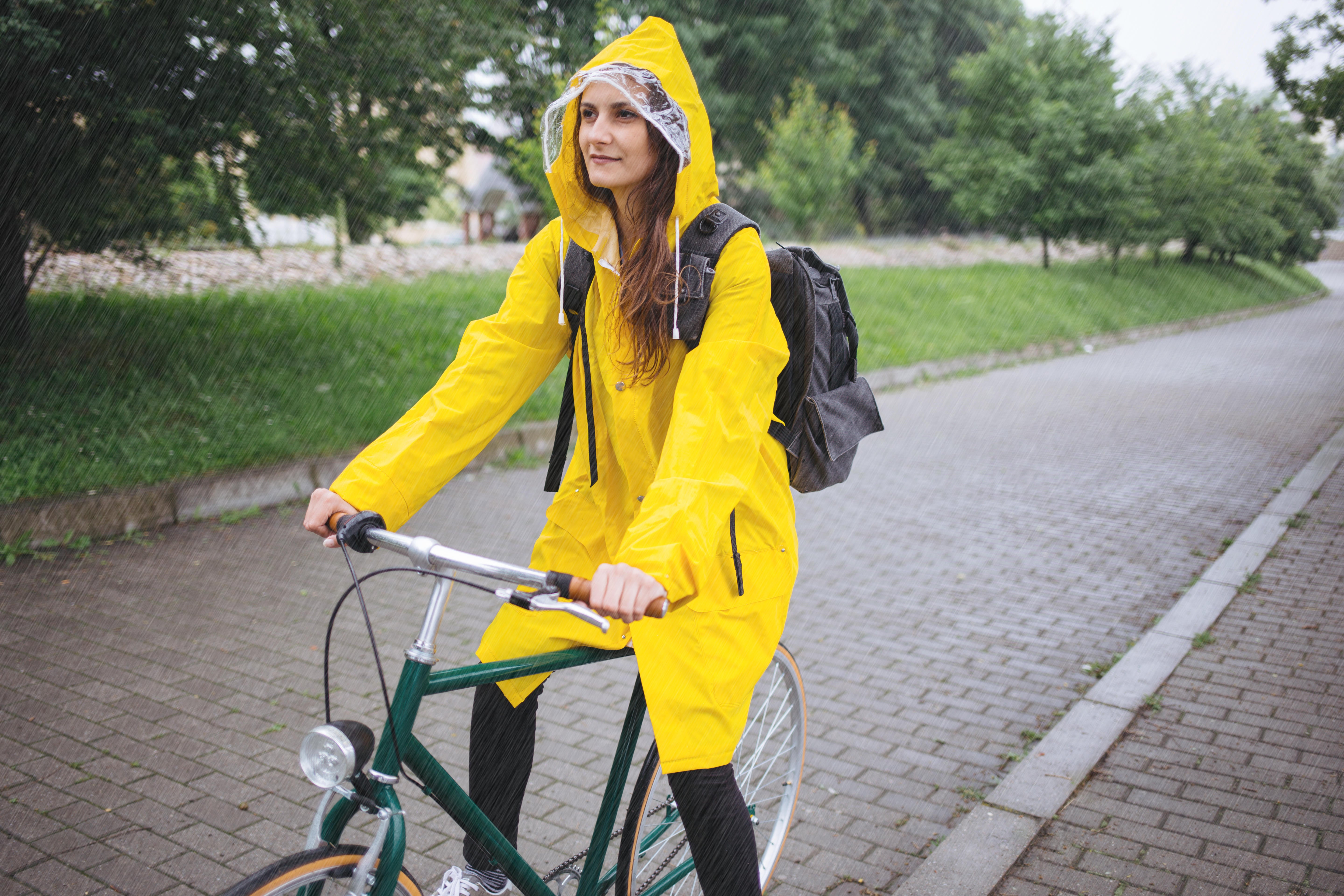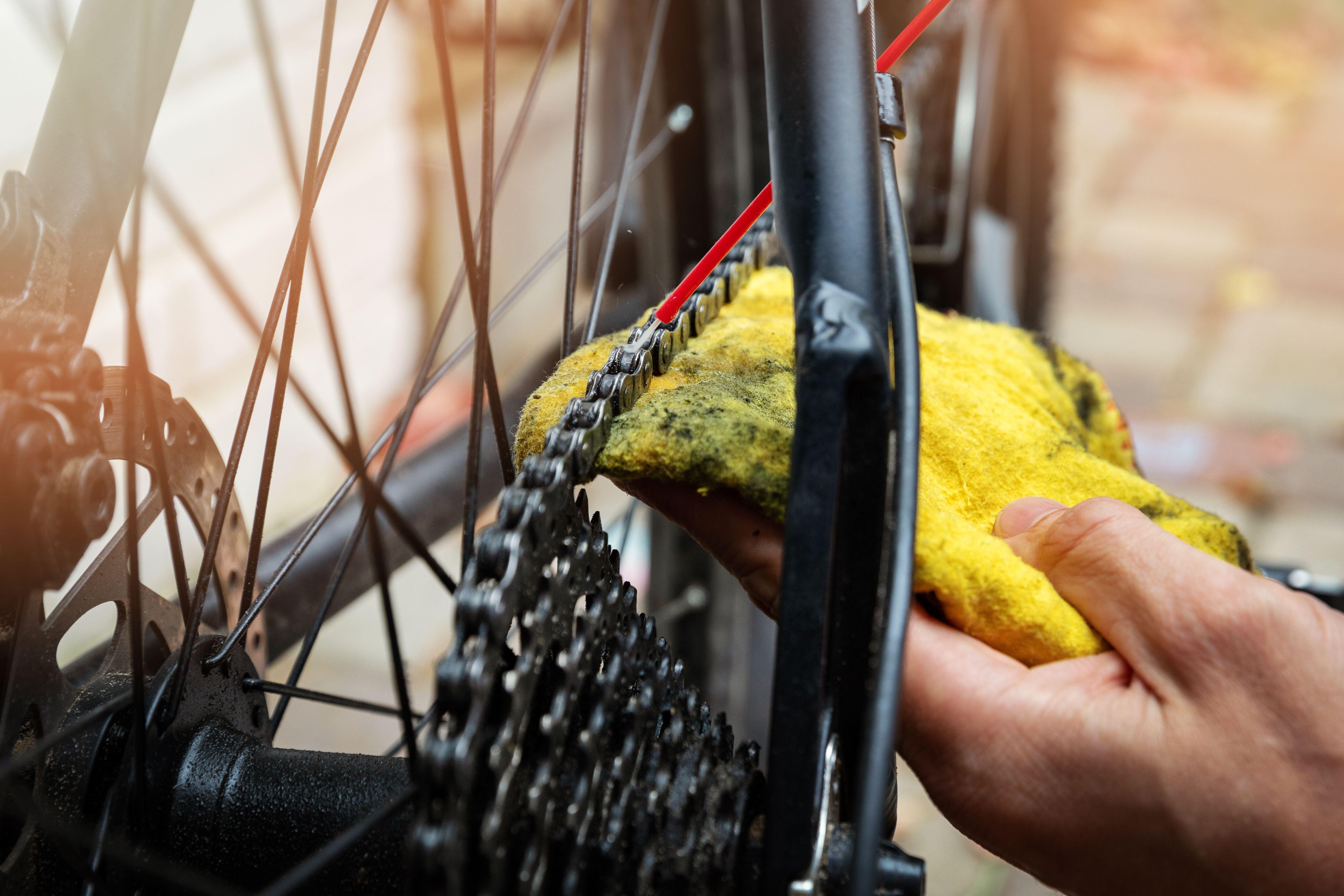Expert tips on how to stay safe cycling in the dark and wet this winter
Don’t let the weather spoil your love of cycling

The transition to winter brings of extra challenges for cyclists, such as reduced daylight hours and adverse weather conditions.
But don’t give up.
Rain, wind, and ice can make roads slippery and reduce visibility, so it’s crucial that bike lovers are extra careful on the roads this time of year.
Here we talk to some cycling experts who have put forward their top tips on how to navigate these wintry conditions on two wheels, so you can continue to enjoy pedalling in the fresh air safely.
Be visible
To stay safe, you need to be visible.
“Wear bright, fluorescent clothing during the day and reflective gear at night,” recommends Joe Nally, head bike guide at Neilson Beach Clubs. “A reflective vest or jacket is essential, along with reflective strips on your ankles and helmet.”
And always double check that your bike lights are working before cycling home in the dark.
“Using white front and red rear lights helps create a contrast to help other road users easily recognise the direction in which cyclists are travelling,” explains James Walker, CEO of Jorvik Tricycles.
Sophie Gordon, Cycling UK campaign manager, adds: “The law requires you to have a white front light and a red rear light between dusk and dawn, so make sure you keep a spare set handy.”
Take up more space
“Take up a little more space in the road,” advises Mariam Draaijer, chief executive of JoyRiders Britain. “This way you can be seen better by drivers and less likely to come into dangerous potholes invisible in low light, making your riding safer for everyone.”
Pack waterproofs

“If it’s chucking it down, some waterproof trousers are always a bonus if you’re going to get caught out by a downpour,” says Draaijer.
Slow down
If the conditions are particularly poor, slow down.
“Give yourself extra time for your journey to allow for your slower pace,” advises Gordon. “This is safer when riding in wet or slippery conditions and gives motorists more time to see you.
“It also gives your body a bit more time to warm up. You’ll also sweat less, which will help keep you warm.”
Layer up
“I always recommend starting with a moisture-wicking base layer to keep sweat away from your skin,” recommends Nally. “Add an insulating mid-layer for warmth, and finish with a waterproof and windproof outer layer.”
There are also some extra cycling accessories that can prevent you from shivering on your bicycle in the height of winter.
“A thin, windproof hat under your helmet can make a big difference,” adds Nally. “Neck warmers or buffs also provide extra insulation. Consider heated gloves or handlebar mitts for extreme, cold temperatures.”
Check your tyres

“Right now, people should be checking that their tyres have good grip which can withstand some slippery leaves and manhole covers,” says Draaijer. “Although they tend to last a little longer, bike tyres can go bald like car tyres.”
Clean your bike

Your bike will need some extra TLC over the next few months.
“Winter can really take a toll on your bike. Rain washes debris to the roadside, where you’ll likely be cycling, and all that moisture isn’t kind to metal parts, especially after gritters have spread salt,” explains Gordon. “With all that salt and grit, regular cleaning is a must. Nobody enjoys washing their bike on a cold day, but it’s worth it.”
Take extra care around sharp corners
“Be careful when taking sharp corners in wet weather,” cautions Draaijer. “This time of year, there are a lots of wet leaves on the ground which are slippery in themselves and do a great job at hiding potholes and puddles!”
Stick to familiar routes
“Avoid unlit roads and paths, particularly if they are poorly maintained or prone to flooding,” advises Nally. “Be cautious on bridges and exposed areas, as these can be particularly icy. If possible, stick to well-lit and familiar routes.”
Bookmark popover
Removed from bookmarks